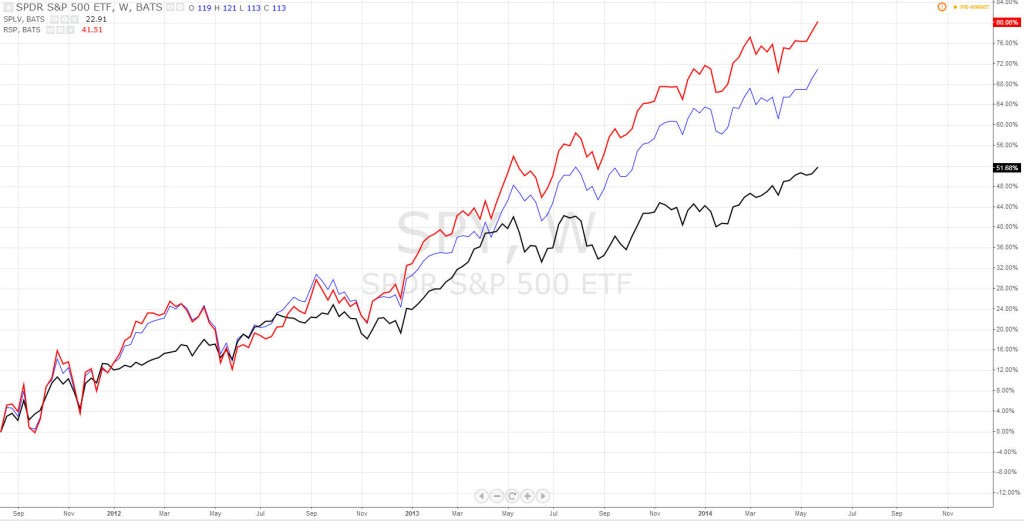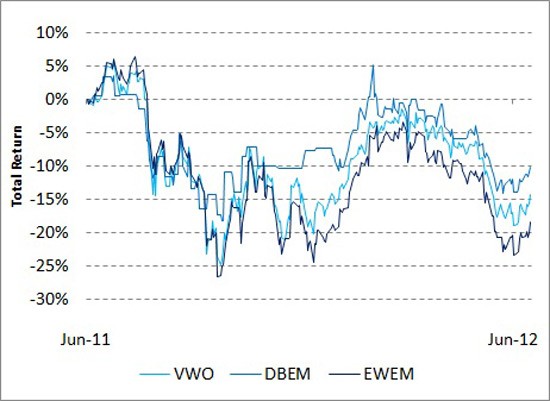A Better Way to Invest in the Broad Market with Equal Weight ETFs
Post on: 21 Июль, 2015 No Comment

Equal weight ETFs offer less volatility and more safety.
The explosion of ETFs in the stock market has made broad market diversification easier than ever before. As an advocate for investors to build long-term broadly diversified portfolios, the availability of ETFs that cover every imaginable sector has made precise asset allocation a true reality. It has also created opportunities to build portfolios that have less volatility than the major indices.
For those seeking capital preservation and low volatility. particularly retired investors, there is a group of ETFs you must not overlook. They are not well-advertised, and are often passed over for sexier leveraged ETFs that provide multiples of any given index’s daily moves.
These are known as “equal-weight ETFs”.
They differ from the standard index-tracking ETF or mutual fund in that most index-tracking investments hold a basket of stocks based on the market capitalization of each stock in the index. Thus, the largest company in an ETF will also have the largest position. So if Google (NASDAQ:GOOG) has a market cap that is equal to 8% of the entire market cap of a given index, the ETF will buy enough Google so that it takes up 8% of the ETFs portfolio.
That’s what causes volatility in most ETFs. If a few stocks make up the majority of the portfolio, then moves in those few stocks moves the entire ETF.
However, if every stock holds an equal position with all the others, then they all must move together for the ETF to move a huge amount. This way, a small cap stock can have just as much influence on the ETF as a Google. The result is you still have exposure to a certain sector or asset class, but with reduced volatility.
With this, however, you may experience reduced returns. An equal-weight ETF may lag its market-cap-weighted peer on the upside, and may not lose as much on the downside. It depends. If lesser-known names have a huge rally one year while big-cap names falter, then equal weight ETFs may outperform on the upside, and vice-versa.
There are five equal weight ETFs I want to draw your attention to.
Guggenheim S&P 500 Equal Weight ETF (NYSE:RSP) gives you exposure to the entire S&P 500, but with each stock given equal weight. In this case, returns over all periods (YTD, 1-month, 3-month, 1 year, 3, year, 5 years) have outperformed the SPDR S&P 500 ETF (NYSE:SPY). YTD, for example, the RSP has returned 8.47% vs. 6.95% for SPY.
Guggenheim S&P 500 Equal Weight Industrials ETF (NYSE:RGI) is an index that tracks the industrial sector (but not the Dow Industrials ), which includes railroads, payroll processors, airlines, delivery services, aerospace, building products, construction, engineering, electrical equipment, conglomerates, defense, and waste management companies. This sector can be quite cyclical, and tied to the performance of the overall economy, so it’s a good place to be diversified on the downside.
Guggenheim S&P 500 Equal Weight Consumer Discretionary ETF (NYSE:RCD).

As a consumer discretionary index, this ETF holds stocks of companies whose products get purchased when consumers have extra money lying around. This means things like auto dealers, entertainment, electronics stores, travel and leisure, homebuilders, and newspapers. You might compare this to the Consumer Discretionary Select SPDR ETF(NYSE:XLY). These two ETFs have returns that are more comparable, but because the equal-weight ETF has less risk and volatility, I would prefer to choose it.
Guggenheim Russell 2000 Equal Weight ETF (NYSE:EWRS). Here’s another index that takes the 2000 stocks from the Russell Index and gives them all equal standing. It has very similar returns to its market-cap-weighted peers as well, but again, the reduced risk and volatility earns my vote. You want exposure to the Russell 2000 because it covers the universe of small stocks, which outperform large ones over the long term. There is some $4 trillion in capital that is benchmarked to this index, so you want to be tied to all that liquidity.
Guggenheim Russell MidCap Equal Weight ETF (NYSE:EWRM) takes on the stocks of mid-sized companies. It has performed substantially better than the iShares Russell Mid-Cap ETF (NYSE:IWR) over all time periods. I suspect this is due to the fact that all small and midsized companies in the index have an equal influence on EWRM when they grow rapidly and their stocks perform well. A rising tide lifts all boats. Its peer, however, may find itself dominated by a few stocks that do really well, take over a huge position in the portfolio, and drown out good performance by other stocks.
Lawrence Meyers owns shares of EWRS and RSP.
Triple your dividends with one stock starting next month!
Are you sick and tired of piddling 2 and 3% dividends on your income stocks? So many investors are and it’s totally not surprising now that the average yield of the DOW has plummeted to 2.52%. With that problem in mind, we created High Yield Wealth. Where our group of investors is handily outpacing the average DOW yields. We’re collecting big monthly dividends… up to $550 every 30 days from a little-known investment that yields a whopping 13%! The best part This company pays out its dividend EVERY SINGLE MONTH… If you’d like to tap into this income stream, and earn more than triple the dividends of even the best blue chip, click here for our full report on this opportunity.














